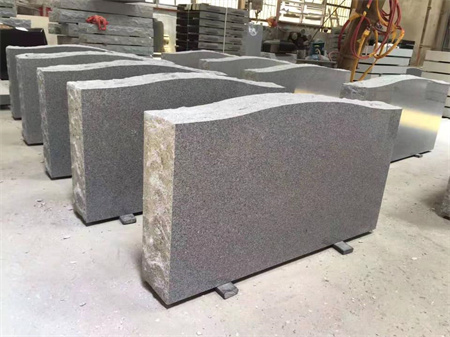Securing Granite Memorial Stones in High-Wind Areas

Securing Granite Memorial Stones in High-Wind Areas
Granite memorial stones, often chosen for their durability and timeless beauty, are not just symbols of remembrance; they are also physical structures that must stand the test of time, weather, and, in some cases, extreme weather conditions. In areas prone to high winds, the stability of these stones becomes even more critical. Strong winds can pose a serious risk to the safety and integrity of granite monuments, potentially leading to accidents, damage, or even the loss of a cherished memorial.
The challenge lies not only in the weight and size of the granite stones but also in the conditions of the soil and surrounding environment. High-wind areas—such as coastal regions or elevated terrains—introduce forces that can destabilize even the most solidly constructed memorials. Fortunately, there are several methods to ensure that granite memorial stones stay secure and continue to stand as lasting tributes, regardless of how harsh the winds may be.
One of the primary considerations when installing a granite memorial stone in a high-wind area is the foundation. The soil composition plays a significant role in how well the stone will remain anchored. In soft or loose soil, the wind’s force can easily shift or topple a stone, even if it is heavy. To prevent this, a deep, solid foundation is essential. A concrete base, poured several feet into the ground, can anchor the stone securely. This foundation should be wide enough to provide adequate support and distribute the stone’s weight evenly. Additionally, the use of a gravel or crushed stone layer around the memorial helps with drainage, ensuring that water doesn’t erode the base over time.

The monument’s design itself can also influence how well it withstands high winds. Larger, bulkier stones with lower profiles are generally more resistant to being knocked over by strong gusts. Taller, narrower monuments, on the other hand, are more vulnerable to toppling. Choosing a design that balances the desired appearance with the need for stability is a wise move in high-wind regions. Flat, horizontal stones tend to have a lower center of gravity, which makes them less susceptible to wind-related movement.
Of course, no memorial installation is complete without considering the surrounding landscape. Windbreaks—natural or man-made—can play a significant role in shielding a granite memorial from extreme gusts. Placing the monument behind a row of trees, shrubs, or even a protective wall can reduce the direct impact of wind, adding another layer of security. It’s also important to ensure that the memorial is placed in a location that minimizes exposure to the most common wind directions in the area.
Regular maintenance is another vital aspect of ensuring the security of granite memorials. Over time, weathering can affect both the stone and its foundation. Cracks or chips in the granite can compromise its strength, and erosion around the base can weaken the support structure. Routine checks for any signs of movement or instability should be carried out, particularly after severe weather events. If any issues are detected, repairs should be made promptly to prevent the stone from becoming vulnerable to further damage.
Additionally, as memorial stones are often located in cemeteries or other public spaces, it’s important to adhere to any local regulations or guidelines for installation. Many municipalities have specific requirements for the size, placement, and anchoring of memorial stones, especially in areas prone to extreme weather. Consulting with local authorities or a professional monument installer can help ensure that all safety standards are met and that the memorial will stand the test of time.
Securing granite memorial stones in high-wind areas requires a combination of thoughtful design, solid construction, and regular maintenance. By paying attention to the foundation, anchoring methods, and the surrounding environment, it’s possible to ensure that these beautiful and meaningful structures remain intact, honoring the memory they represent for generations to come. With the right precautions, granite memorials can not only withstand the challenges posed by high winds but continue to stand tall, a lasting tribute to the lives they commemorate.
